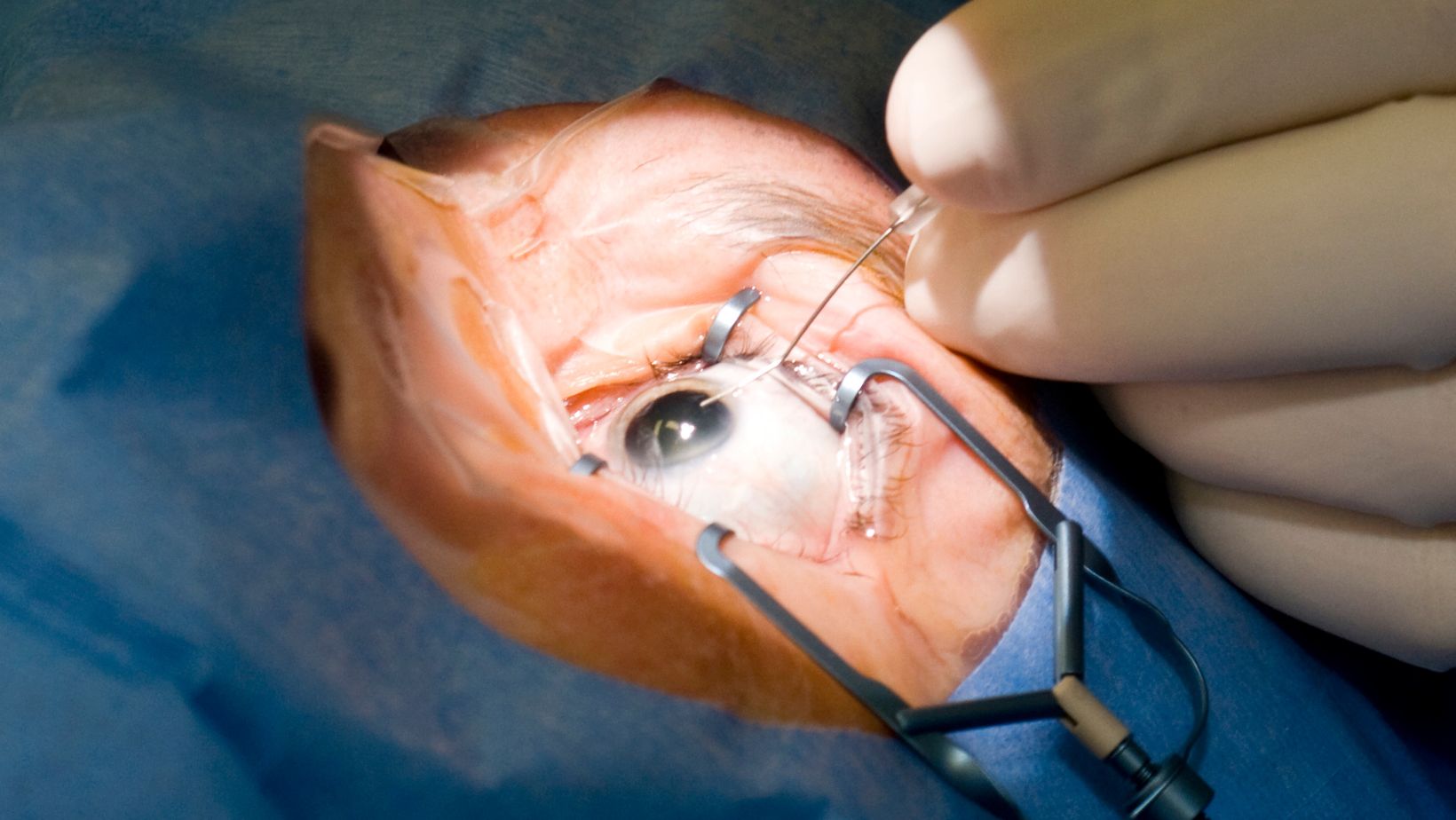LASIK eye surgery has transformed the way many people see the world, offering a promising alternative to glasses and contacts. However, as with any surgical procedure, it comes with potential risks and complications that every patient should consider before deciding to undergo the treatment. Whether you’re researching for yourself or helping a loved one navigate these decisions, understanding both the benefits and the possible drawbacks of LASIK is essential.
In this article, we will delve into the various risks associated with LASIK, explore common complications, and discuss what patients can do to minimize these issues. By examining the details, from candidate selection to postoperative care, you’ll gain a comprehensive view that helps you make a decision based on both hope and caution.
Understanding LASIK
LASIK, which stands for Laser-Assisted In Situ Keratomileusis, is a refractive surgical procedure aimed at reshaping the cornea to improve vision. The process involves creating a thin flap in the cornea, using a laser to remove a predetermined amount of tissue, and then repositioning the flap. This delicate procedure helps to correct conditions like myopia, hyperopia, and astigmatism.
The technology behind LASIK has evolved considerably over the years, making it one of the most popular choices for vision correction. Nevertheless, the procedure is not without its intricacies. The success of LASIK depends heavily on the individual’s eye anatomy, the skill of the surgeon, and the precision of the equipment used. Understanding these factors can help prospective patients gauge whether they are good candidates for the surgery.
Why Patients Consider LASIK
Many people are drawn to LASIK because it offers a chance to regain clear vision without the daily hassle of glasses or contacts. The prospect of waking up with improved vision is undoubtedly appealing, and for many, the procedure significantly enhances their quality of life. However, as with any elective surgery, the promise of improved sight must be weighed against the potential for complications.
Patients often choose LASIK with the expectation that they will experience minimal downtime and rapid visual recovery. In reality, while most individuals do enjoy a relatively smooth recovery process, some complications can arise either immediately or in the long term. Being aware of these possibilities is an important part of the decision-making process.
For those exploring their options, getting LASIK in Chicago might be one promising avenue, but the key is to be well informed.
Risks and Complications: What Are the Concerns?
Despite its high success rate, LASIK is not a one-size-fits-all solution. Understanding the possible risks and complications can help patients set realistic expectations. Here are some of the most common issues associated with LASIK surgery:
Dry Eyes
One of the most frequently reported complications after LASIK is dry eye syndrome. The laser procedure can temporarily reduce tear production, leading to dryness, discomfort, and sometimes blurred vision. For most patients, these symptoms are short-lived and can be managed with lubricating eye drops. However, for some, dry eyes can become a persistent issue requiring ongoing treatment.
Glare, Halos, and Starbursts
Postoperative visual disturbances such as glare, halos, and starbursts around lights are common, particularly during the first few weeks following the surgery. These effects are usually more noticeable at night and can be disconcerting.

While many patients find that these issues diminish over time, for some, they can persist, potentially affecting night driving and overall quality of vision.
Flap Complications
Since LASIK involves creating a flap in the cornea, there is always a risk associated with this step. Flap complications can include an incomplete or irregular flap, which might lead to further issues during the healing process. In rare cases, flap dislocation or inflammation may occur, necessitating additional interventions. Surgeons take numerous precautions to ensure the flap is created accurately, but it remains an inherent risk of the procedure.
Under- or Over-Correction
Even with precise measurements and advanced laser technology, there is a chance that the cornea might be under- or over-corrected. This means that the desired level of vision correction isn’t fully achieved, and the patient may still need glasses or contacts, or they might require an enhancement procedure. The possibility of requiring additional surgery is a concern that should be discussed during the consultation process.
Regression
In some cases, the benefits of LASIK may decrease over time, a phenomenon known as regression. While many patients maintain their improved vision for years, a small percentage may notice a gradual return of their refractive error. This is particularly relevant for those with high prescriptions or for patients who undergo the surgery at a younger age. Monitoring vision changes post-surgery is important, and additional treatments may be necessary if regression occurs.
Infection and Inflammation
Although extremely rare, there is always a risk of infection with any surgical procedure. In the case of LASIK, the risk is minimized by sterile techniques and thorough postoperative care, but it cannot be entirely eliminated. Infections can lead to severe complications if not promptly treated, so it’s crucial to adhere to all aftercare instructions. Similarly, inflammation, though uncommon, can arise and may require medical intervention.
Corneal Ectasia
A more severe, albeit rare, complication is corneal ectasia—a condition where the cornea becomes weakened and begins to bulge outward. This can lead to significant visual impairment and may require further surgical procedures, such as corneal collagen cross-linking or even a corneal transplant in extreme cases. Careful preoperative screening and adherence to surgical guidelines help reduce this risk, but it remains an important consideration for potential candidates.
Who Is at Risk?
Not everyone is an ideal candidate for LASIK, and understanding the factors that may increase the risk of complications is crucial. Patients with thin corneas, high refractive errors, or certain pre-existing eye conditions might face a higher likelihood of postoperative complications. Additionally, individuals with autoimmune disorders or severe dry eye issues should exercise caution.
A comprehensive evaluation by an experienced eye surgeon is essential to determine whether LASIK is a safe and effective option for you. Detailed preoperative assessments, including corneal thickness measurements and mapping of the eye’s surface, can help identify any potential red flags before surgery is performed.
Pre-Surgical Considerations and Preparation
Before opting for LASIK, patients should engage in thorough consultations with their ophthalmologist. These discussions should cover not only the potential benefits but also the realistic risks involved. Key considerations include:
- Medical History: Be sure to disclose any underlying health conditions, medications, or previous eye surgeries. These factors can influence your eligibility for LASIK.
- Expectations: Have an honest conversation about what you hope to achieve with LASIK. Understanding that results can vary helps set realistic expectations.
- Alternative Treatments: In some cases, other forms of vision correction, such as PRK (photorefractive keratectomy) or implantable lenses, might be more suitable.
By preparing adequately, you can ensure that you are making an informed decision about your eye health and the potential risks associated with the procedure.
Managing Risks Post-Surgery
Postoperative care is as important as the surgery itself. Following your surgeon’s instructions to the letter can significantly reduce the likelihood of complications. Here are some key aspects of postoperative management:

- Follow-Up Appointments: Regular check-ups allow your surgeon to monitor your healing process and address any concerns promptly.
- Eye Drops and Medications: Adhering to your prescribed regimen of eye drops helps prevent infections and manage inflammation.
- Avoiding Strenuous Activities: In the initial recovery period, it’s vital to avoid activities that might strain your eyes or disrupt the healing flap.
- Monitoring Symptoms: Pay attention to any changes in your vision or discomfort levels. Early detection of issues can lead to quicker and more effective interventions.
By actively participating in your recovery process, you can help ensure the best possible outcome from your LASIK procedure.
The Importance of Informed Consent and Consultation
One of the cornerstones of successful LASIK surgery is informed consent. This means that you fully understand the risks, benefits, and alternatives before undergoing the procedure. A detailed consultation with your eye care provider should cover every aspect of the surgery, including potential complications and the likelihood of needing additional treatment in the future.
It’s perfectly acceptable—and encouraged—to ask questions and seek second opinions if you’re unsure about any part of the process. An experienced surgeon will be transparent about both the successes and limitations of LASIK, ensuring that you have a realistic view of what to expect.
Final Thoughts
LASIK eye surgery offers many people the chance to achieve clearer, more independent vision. However, like any medical procedure, it is not without its risks and potential complications. From dry eyes and visual disturbances to more severe concerns like corneal ectasia, patients must weigh these factors against the benefits. A thorough preoperative evaluation, clear communication with your surgeon, and diligent postoperative care are key to minimizing these risks.
Understanding the full spectrum of possibilities helps ensure that you are making a well-informed decision—one that aligns with both your hopes for improved vision and your overall eye health. Whether you ultimately decide to proceed with LASIK or explore alternative treatments, being aware of the risks is an essential step toward achieving the best possible outcome for your eyes.
Remember, your vision is one of your most valuable assets. Taking the time to educate yourself and consult with qualified professionals is the best way to protect it.

